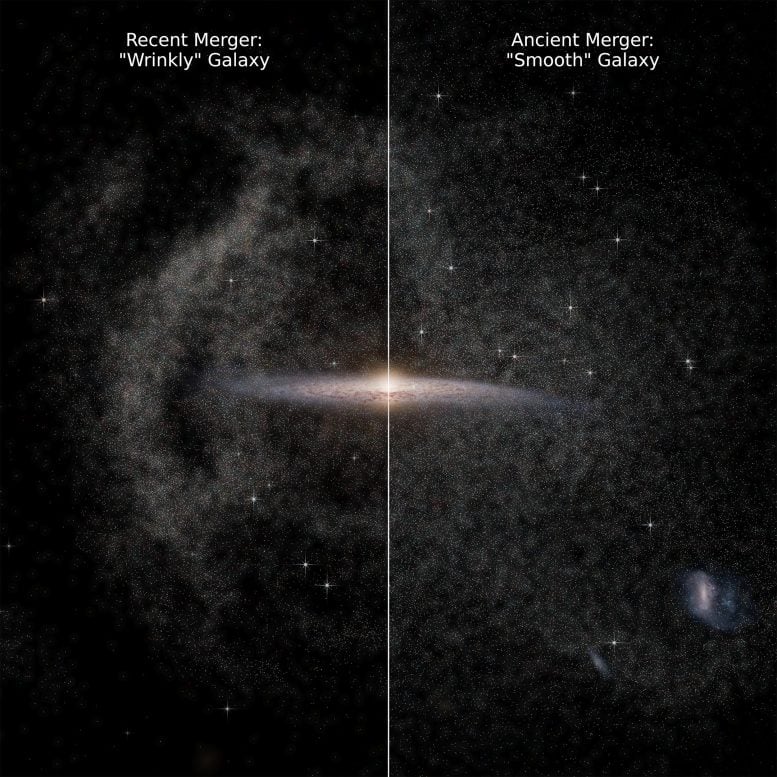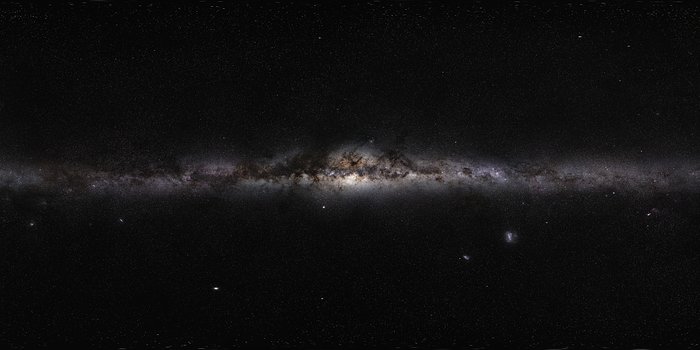The Milky Way’s past just got a shake-up. New research shows our galaxy’s last big collision wasn’t 8-11 billion years ago—it was only 3 billion years ago. This discovery changes how we see galactic evolution and opens up big questions about the universe. So, why does it matter? Let’s break down the science and its impact.
The Point of Collision: A Cosmic Rewind
The most recent collision of the Milky Way with another galaxy has been dated back to less than three billion years ago, a timeline that dramatically alters our view of galactic evolution. Scientists originally believed that the Milky Way’s last significant collision happened over eight billion years ago during an event known as the Gaia-Sausage-Enceladus (GSE) merger. However, new data from the Gaia mission suggests that a more recent collision, called the Virgo Radial Merger, brought new stars into our galaxy much later than expected.
Gaia’s data, which tracks over a billion stars, reveals “wrinkles” in the Milky Way—ripples in space caused by past galactic mergers. The Virgo Radial Merger, a previously unknown collision, appears to have occurred only 2.7 billion years ago, introducing stars with unusual orbits into the Milky Way’s halo.
This collision was significant because it flooded the Milky Way with stars and debris, reshaping its structure. By studying the wrinkles left behind by the stars’ movements, scientists were able to trace the timing of the collision with unprecedented precision. This event, which crashed through the center of the Milky Way, provides new insights into how galaxies evolve and grow by absorbing smaller galaxies.
Gaia’s Role: Unlocking Galactic Mysteries
The Gaia spacecraft, launched by the European Space Agency, has been a game-changer in mapping the Milky Way. It tracks the motion, luminosity, temperature, and composition of over a billion stars, offering an unprecedented level of detail. Gaia’s mission has allowed scientists to observe cosmic events that are otherwise hidden from view, including the wrinkles in the Milky Way’s halo left by collisions.
Gaia’s data, particularly its third data release, included comprehensive observations of stars in the Milky Way’s halo. These stars, which move in unusual patterns, were traced back to the Virgo Radial Merger. This discovery was possible by comparing real data with cosmological simulations, pinpointing the collision’s timing. Gaia’s ability to track these stars over time offers a detailed map of the Milky Way’s history. The spacecraft essentially lets us look back in time, revealing the remnants of galactic collisions that have shaped the structure of the galaxy we see today. Without Gaia, the discovery of the Virgo Radial Merger might have gone unnoticed.

Gaia’s contributions underscore the importance of space missions that can collect long-term, detailed data. It highlights how advanced space observatories are essential for unlocking the mysteries of galactic evolution.
The telescope not only traces individual stars but also helps build a broader picture of the cosmos by connecting stellar movements with their past collisions and interactions.
The Science Behind the Wrinkles: Tracing Galactic Collisions
The wrinkles in the Milky Way’s halo are not just abstract cosmic features; they are the result of galactic collisions that leave lasting impacts on star movements and the structure of the galaxy. When a smaller galaxy collides with a larger one like the Milky Way, it creates ripples through the stars, like pebbles dropped into a pond. These ripples, or wrinkles, give us a timeline of the collision and the integration of new stars.
Researchers found that the Virgo Radial Merger was responsible for many of the unusual star movements observed in the Milky Way’s halo. The wrinkles created by this event are still visible in Gaia’s data today, offering a direct link to the past. By studying these wrinkles, scientists can trace when and how the Milky Way absorbed smaller galaxies. These mergers are crucial for understanding how galaxies grow over time, both in size and complexity. The Virgo Radial Merger, for instance, likely brought not only stars but also other smaller galaxies and star clusters with it, all of which joined the Milky Way in a relatively short time.
The study of galactic wrinkles adds a new dimension to our understanding of galaxy formation and evolution. It shows that galaxies like the Milky Way are constantly changing and absorbing smaller systems, a process that continues to this day. The evidence of these interactions is embedded within the structure of the galaxy itself, making it possible for scientists to unravel complex galactic histories with the right data and tools.
Why This Discovery Matters: Implications for Astrophysics
The previous belief that the last major collision occurred over eight billion years ago shaped much of what we thought we knew about the Milky Way’s formation. The discovery of the Virgo Radial Merger pushes this timeline forward by billions of years, forcing a reevaluation of the Milky Way’s history. This new timeline suggests that the Milky Way is younger and more dynamic than we previously thought. The collision with the Virgo Radial Merger brought in new material and possibly spurred new star formation, adding complexity to the galaxy’s structure.
By pushing the timeline forward, this discovery could lead to new insights into galactic behavior, star formation, and the overall life cycle of galaxies. It is a reminder that the universe is far more dynamic and unpredictable than we often give it credit for. The Milky Way, far from being a stagnant structure, continues to grow, change, and evolve through interactions with its cosmic neighbors.
Beyond the Milky Way: Cosmic Collisions and the Universe at Large
While the focus of this discovery is the Milky Way, it opens the door to broader questions about galactic evolution across the universe. If the Milky Way experienced a major collision less than three billion years ago, what does this mean for other galaxies? Are other major galaxies in the universe undergoing similar transformations?
Galactic collisions are a fundamental aspect of cosmic evolution. They can trigger bursts of star formation, redistribute gas and dark matter, and alter the shapes and trajectories of galaxies. By understanding how these collisions happen and their aftermath, we can gain a better understanding of the broader universe.
This discovery also raises important questions about the future of the Milky Way. If collisions are a common part of galactic evolution, what will happen when the Milky Way eventually collides with its neighbor, the Andromeda galaxy? Predicted to occur in about four billion years, the Milky Way-Andromeda collision will likely trigger another round of star formation and restructuring. Understanding past collisions helps us prepare for and predict the outcomes of future cosmic event.
The Future of Galactic Research: What Comes Next?
The discovery of the Virgo Radial Merger is just the beginning. With Gaia continuing to collect data, we can expect even more revelations about the Milky Way’s history and evolution. Future research will likely focus on refining our understanding of other collisions and how they shaped the galaxies we see today.
The Gaia mission is ongoing, and with each data release, we gain a more detailed understanding of our galaxy’s past. Researchers are already looking into other potential collisions and mergers that may have played a role in the Milky Way’s development.
Reference:
Donlon, T., Newberg, H.J., Sanderson, R., Bregou, E., Horta, D., Arora, A., & Panithanpaisal, N. (2024). The debris of the ‘last major merger’ is dynamically young. Monthly Notices of the Royal Astronomical Society. DOI: 10.1093/mnras/stae1264



















